WFDD/Wake Forest Community Conversation/World Café on Hunger & Food Insecurity
Suggestions concerning access to nutritious food (57 suggestions; these 30 were most appealing/policy-related)
Education
∙ Implement better—and fun—nutrition curricula in public schools.
∙ Nutrition education for parents, either directly or through their school-aged children.
∙ Food-bank run educational programs.
∙ Targetted nutrition education programs in food-insecure/lower-income neighborhoods.
∙ Combine policy/advocacy education with nutrition education.
∙ Provide cooking classes in community/rec centers or other neighborhood gathering places.
∙ Build nutrition lessons into science curricula—and provide free seeds as part of the classes.
∙ Educate wealthy community members about hunger/food insecurity, encouraging philanthropy.
∙ Mandate (or encourage) healthy snacks/vending items at schools.
Government Subsidies
∙ Launch at least one community garden at all schools.
∙ Provide tax breaks to corner stores willing to stock healthier foods.
∙ Defray the costs of production/wider distribution of healthier/nutritious foods.
∙ Increase food-stamp values for healthy foods.
Transportation
∙ Provide bus passes from community centers to grocery stores.
∙ Create/expand ‘Share-A-Ride’ programs to enhance access to supermarkets.
∙ Expand availability in food-insecure neighborhoods/blocks, via food trucks.
Miscellaneous
∙ Expand existing backpack programs, based on research into how these work best.
∙ Recover/donate food that would otherwise be wasted, expanding existing programs.
∙ Bodegas/corner stores accept food stamps; stock healthier foods/fresh produce.
∙ Encourage use of edible landscapes.
∙ Expand use of food stamps at community markets (and consider a match program?)
∙ Require businesses/nonprofits/government to pay a living wage.
∙ Review and adapt Guilford County’s “Share the Harvest” program.
∙ Encourage partnerships among food/nutrition advocacy groups; too much squabbling.
∙ Support/encourage farmers donating a portion of their crops to needy individuals.
∙ Encourage church programs like Sunnyside Ministry to include nutritionists.
∙ Attract a ‘Bread For the World’ chapter to Forsyth County.
∙ Develop catchy Public Service Announcements encouraging nutritious, low-cost eating habits.
∙ Initiate a ‘Community Competition’ for ideas to attract grocery stores to food deserts.
∙ Yard signs to promote awareness of food scarcity.
Suggestions for engaging neighborhoods (56 suggestions; these 11 most appealing/policy-related)
1. Community Gardens: Support gardens in each geographic district of Winston Salem; easily accessible/useable by community members.
2. Cross-Neighborhood Partnerships: Link adjoining, or otherwise connected, Winston-Salem neighborhoods with an eye to improving nutrition practices in both. Friendly competitions, FitBit sponsorships, neighbor-to-neighbor (or group-to-group) accountability partners.
3. Education Within Neighborhood on Food: Engage vulnerable populations on the importance of a stable food environment and proper nutrition through a series of free information sessions.
4. Expanded/Enhanced Backpack Program: Review existing Forsyth Backpack Program, comparing to others around the state/region; with added resources, scale a revised program as broadly as possible.
5. Food Desert Eradication: Work with local/regional grocery-store chains, such as Lowe’s, WalMart, Aldi, and newcomer Publix, to understand their requirements for locating in under-served neighborhoods—and aggressively pursue outlets in those neighborhoods.
6. Food Drives: Community-based/organized (city-subsidized?) food drives, preceded by regular meetings to talk about community food baskets and reducing food waste.
7. Food Pantries: Expand number/availability within lower-income neighborhoods; maximize number of people served without requiring expensive/complicated transportation.
8. Neighborhood Spaces: Create incentives/support use of schools and churches (when not in use) as a gathering spot to educate communities on nutritional practices, cooking, gardening.
9. Pre-Natal Neighborhood Engagement: Local hospitals/health clinics bring nutrition, pre-natal care programs directly to expecting mothers/partners in lower-income neighborhoods, working through community centers/in-neighborhood health providers.
10. Public-Private Neighborhood Partnerships: Set up within neighborhoods (like BIDs in other cities), with specific focus on enhancing nutritious food availability.
11. Responsibility Education: Emphasize in wealthier neighborhoods the responsibility we all have to ensuring a decent daily nutritional intake—especially for children. Incentivize philanthropy and other means of mutual support.
Suggestions for overcoming stigma (73 ideas/suggestions; these 15 were most appealing and policy-related)
1. Cooking and nutrition classes for food-insecure communities
2. Classes provided to SNAP/WIC recipients, taught by culinary students
3. Inclusive community dinners
4. Community-wide education programs (“hungry people are like you and me”)
5. Sensitivity training program for soup kitchen/food pantry staff
6. Incorporating welfare recipients as volunteers
7. Social Media advocacy initiative
8. Universal breakfast in class program
9. Distribution of free meals through existing programs (e.g., HOPE)
10. Expansive public program of poverty simulation/exercise, aimed at reaching large swath of
upper three income quintiles in Winston-Salem.
11. Public Service Announcements
12. Expand existing Humans of Winston Salem program, to include a lively website; publish (online and/or print) a book similar to Humans of New York, humanizing food-insecure people.
13. Promotions and initiatives by local/statewide celebrities like Chris Paul
14. Grocery store displays about affordability of foods
15. Expand efforts to attract media coverage of hunger and food insecurity, presented in ways that don’t demonize or even more subtly stigmatize lower-income/food-insecure city residents.
